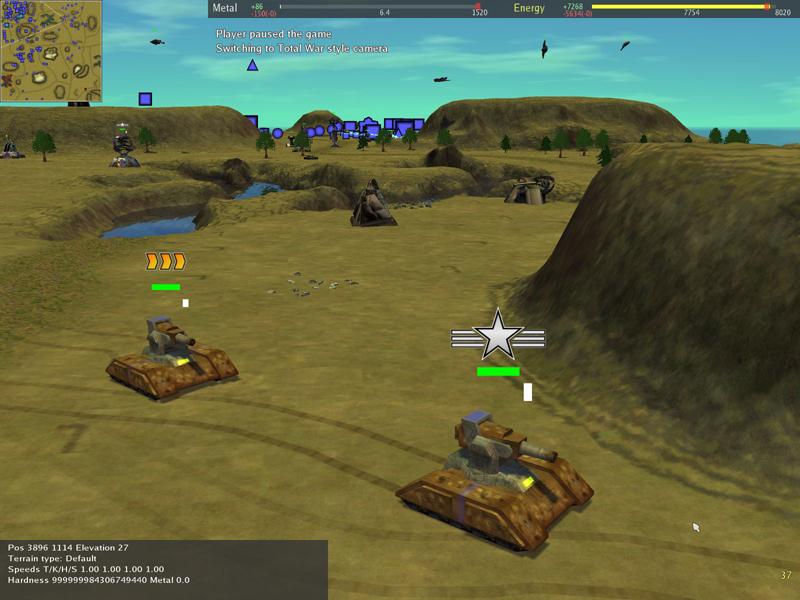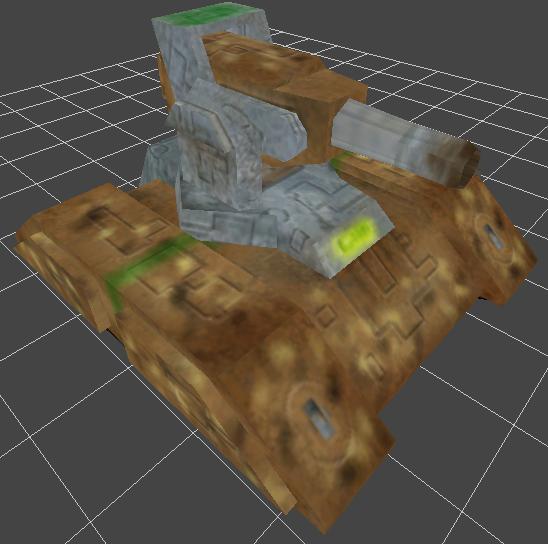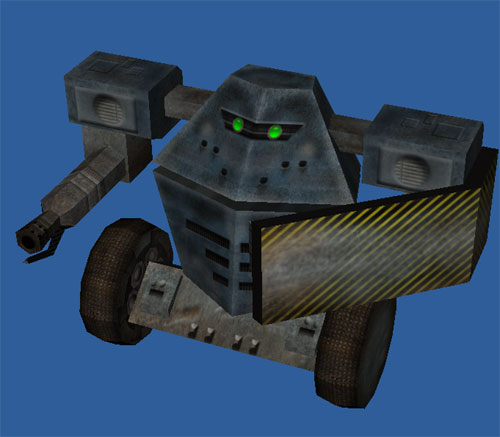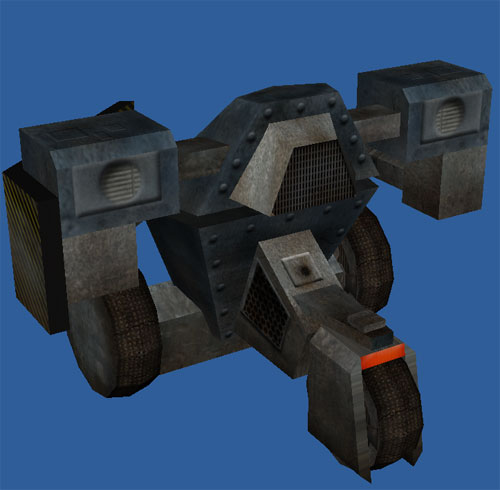

Um, I forgot to hide boob somewhere <hides boob>
BTW, PL, if you ever want me to skin something of yours again, here are some tips:
1. The undersides of things should not take up much texture space. Really. Nobody ever sees the bottom of things in an RTS, with the exception of flying things, or maybe something with really, really, really long legs.
2. If your model is essentially identical on both halves, then design everything to be split down the middle, saving yet more texture space.
3. Mirror more efficiently. The treatment of the tread areas was not very good. Should've taken both inside bits and given them a very small area (after all, we can hardly see those faces), and both outsides should have been stacked on top of each other, to mirror (*occasionally, you don't wanna mirror, for things like writing, but you can generally cheat, even there, by flipping uv coordinates... dunno whether Wings can do that tho).
4. For goodness sakes man, if you're going to redo and "improve" an OTA model, please, go ahead and give us more detail and greebling. Between the inefficient use of texture space and the low detail, I felt a bit constrained, frankly- a 512 should never feel as grainy and low-detail as this one turned out (yes, all you skinners, this wasn't exactly one of Argh's best, but meh, I didn't wanna rebuild his uvmap and large parts of the model, just to make a point here, frankly).
This is what a 512 skin, on an efficiently-unwrapped model, should look like:


Effective use of mirroring (even the treads of the wheels are all mirrored, to get maximum use out of the space here) makes it possible to add quite a bit of detail to the skin. That's what we need- not just a basic unwrap. Also, be wary of distortions, and always use that test-map in Wings, to make sure you don't have any distorted projections- sometimes Wings's unfolding algorithm just doesn't get a certain unfold right, and you'll have to try cutting along a different seam.
Mainly... and this, frankly, just takes experience... you've gotta learn to think like a painter, and get beyond the basics of unwrapping here. Painters are going to want to lavish detail on important areas and greebles, (detailing a greeble, even though it's a smaller area of a model, creates more visual interest then greebling a large planar area, in a lot of cases, and facilitates more creative cheating). Painters will not want to waste very much time on small areas that will rarely be seen by players (the undersides especially- keep 'em no more than half the size of topsides, unless you have a compelling reason). And if you're going to make a habit of reworking OTA stuff, I frankly recommend just rebuilding them from scratch- don't reuse Cavedog's meshes, which have lots of problems, and up the polycount- while I'm not exactly in agreement with Caydr about final polycounts, you can easily spend 1000-1500 (efficiently!!) on something like the Pillager, which is a late-game siegecracker unit.





